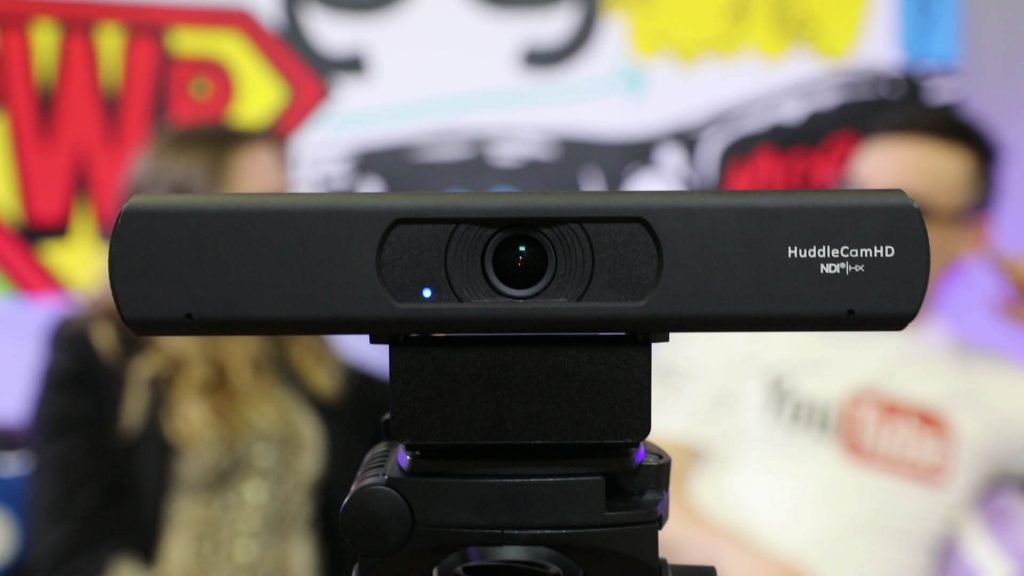Understanding the difference between EPTZ and PTZ
The PTZ (pan, tilt, zoom) camera market has an existing new technology called ePTZ, which stands for electronic pan, tilt, and zoom. The world of pan, tilt, and zoom video is evolving and so are the tools that allow users to digital enhance their video conferences. While ePTZ and PTZ functionalities are different, each with its own pros and cons. As such, it is important to learn about how these two technologies differ so that you can choose the best cameras to suit your needs.

How EPTZ Works
A conventional PTZ camera can also be described as a remotely controlled camera or a robotic PTZ camera. You can pan (move the camera left and right), tilt (rotate the camera up or down) or zoom (make the video larger or smaller) using am IR remote control or PTZ application. A PTZ cameras built-in motors are responsible for the physical movement of a typical PTZ camera which uses various types of driving methods. When you want to adjust the lens, you can use the zoom and focus operations from a computer, smart device (such as a smartphone or tablet), or even an IR remote control.
When it comes to an ePTZ, its way pan, tilt and zoom is handled is completely different. Although the camera can tilt, pan or zoom, the operations don’t involve any movement of mechanical parts. The camera remains static as the tilting, panning or zooming is done through a digital simulation inside of the high-resolution sensor. This concept might be familiar to some camera users. Digital zoom through software simulation is a technology that has been in existence for some time. Instead of the real zoom lens, the majority of smartphones have adopted simulated digital zoom technology. A lot of web cameras can also operate through digital zooming. When the digital zoom feature in a web camera is engaged, a user can tilt, pan or move inside the zoomed image.
The drawback of the Earlier Fixed Lenses with Digital Zoom
With standard Full-HD and HD cameras, the digital zoom has traditionally been un-useable because the image quickly pixelates. In the past, digital zoom and the related pan and tilt weren’t particularly effective for professional users who needed to maintain 1080 or 720p quality. However, things have changed with the latest HuddleCamHD ePTZ cameras with built-in 4K video sensors. HuddleCamHD has been a leader in USB video conferencing cameras with real optical zoom lens for many years. These PTZ cameras maintain the quality of images even with a changing focal length using optical zoom. For instance, if the camera’s sensor has a graphic resolution of five megapixels, it will always capture a five-megapixel image irrespective of how much it is zoomed because the light hitting the sensor is changed optically not digitally. On the other hand, when an image is captured using fixed lenses featuring digital zooming, its quality reduces with an increase in magnification (zooming). With every magnification level, the image appears more stretched, and its resolution decreases. For instance, when the 5-megapixel sensor is digitally magnified by 2X, the resulting image will have a 2.5-megapixel resolution. The zooming can make images appear pixelated and blurred rapidly.
The following table outlines the digital zoom effects on image resolution, field of view, and pan/tilt ranges for the HuddleCamHD EPTZ webcams.
| HC-EPTZ-USB & HC-EPTZ-NDI | ||||||
| Zoom Level | Pixel Width | Pixel Height | HFOV | VFOV | EPan Range | ETilt Range |
| 1x | 3840 | 2160 | 108 | 60.75 | 0 | 0 |
| 2x | 1920 | 1080 | 54 | 30.375 | ± 27 | ± 15 |
| 3x | 1280 | 720 | 36 | 20.25 | ± 36 | ± 20 |
| 4x | 960 | 540 | 27 | 15.1875 | ± 41 | ± 23 |
| 5x | 768 | 432 | 21.6 | 12.15 | ± 43 | ± 24 |
| 6x | 640 | 360 | 18 | 10.125 | ± 45 | ± 25 |
| 7x | 549 | 309 | 15.4 | 8.7 | ± 46 | ± 26 |
| 8x | 480 | 270 | 13.5 | 7.6 | ± 47 | ± 27 |
What Makes the New ePTZ Cameras an Upgrade?
The new ePTZ cameras are a remarkable upgrade of the former fixed-lens cameras featuring digital zoom with standard full-HD or HD resolution sensors because they have more resolution to use with digital zoom. With a slight digital zoom, the image of a 1080p camera will start looking pixelated if you are using a 1080p connected software for viewing. Nevertheless, there’s much more magnification capacity if you begin with a 4K image. You can magnify this high-resolution image by three times and still get 720p (standard high definition) -image quality. 720p is sufficient for many video conferencing applications and it’s the standard quality for industry leader Zoom Video Conferencing.
The drawbacks of ePTZ Cameras
Despite having advanced sensors with a higher resolution as compared to PTZ, ePTZ cameras have two major drawbacks. First, in terms of its resolution and secondly, in the range of view. These cameras might not be the best choice when you want to achieve high zoom levels from far distances away. If you magnify a 4K camera by 3X, its resolution will fall to 720p. The resolution decreases with an increase in magnification, and in some cases, the resolution can fall beyond usable levels. Conversely, a typical PTZ camera provides a large optical image magnification can enhance viewable images for distances up to 75′ away from the camera without pixelation. Don’t forget that a 4K optical zoom camera can zoom an image by 30X and still maintain 4K resolution.
The second drawback of an ePTZ camera is the field of view it provides. When it comes to its counterpart, PTZ camera, it can pan up to 340 degrees and tilt to a maximum of 120 degrees. As such, the camera can cover a pretty big room area. In contrast, the field of view of an ePTZ camera is limited to the real lens and so, it quite narrower as compared to the PTZ’s. To accomodate this the new ePTZ cameras from HuddleCamHD include a wide 108-degree field of view.
Benefits of ePtz
Amidst the aforementioned possible disadvantages, ePTZ cameras remain a great choice in various circumstances. An ePTZ camera has two key advantages (price and size) over PTZ cameras at the minimum. Besides, a third advantage which is intelligence that can built into ePTZ cameras for automated the ePTZ. The new HuddleCamHD ePTZ cameras now feature “Auto Framing” intelligence which allows users to turn on a mode that automatically uses the ePTZ functionality.
Starting with the first advantage, price, ePTZ cameras can be quite cheaper as compared to their PTZ counterparts. The higher prices of PTZ cameras are attributed to the many motors and other components that are involved in the lens adjustment and camera positioning. Besides, PTZ cameras use advanced firmware for the reception and execution of control signals sent by remote control or a controlling computer. Conversely, ePTZ cameras don’t need any of those. Their basic construction features a lens and a sensor only. As such, they are quite smaller, and this is where they present size as their second advantage. Because of their small size, ePTZ cameras are appropriate for mounting in areas where it’s not practical to mount or use bigger PTZ cameras.
Lastly, although this is yet to be available, the third advantage is about possible instant camera positioning. Software is yet to draw level with is functionality. Nevertheless, there’s a theoretical possibility that an ePTZ camera user can cut from a preset short another promptly on the camera. On the other hand, when it comes to a PTZ camera, it has to be moved manually to another preset position, and this takes time. An ePTZ camera is static, and this is what it could make its repositioning potentially instant.
Where can ePTZ Cameras be useful

There could be many circumstances where PTZ and ePTZ cameras might work together. The lower prices and smaller sizes of ePTZ Cameras as compared to PTZ mean that you can add more of the former in placeS where it’s not practical to use the latter. Besides, organizations (including non-profits) that don’t have huge budgets might find ePTZ Cameras very affordable PTZ alternatives. By going for ePTZ, the organizations will have chosen to enjoy some of the key benefits that the PTZs provide, without having to spend beyond their budgetary limits.

